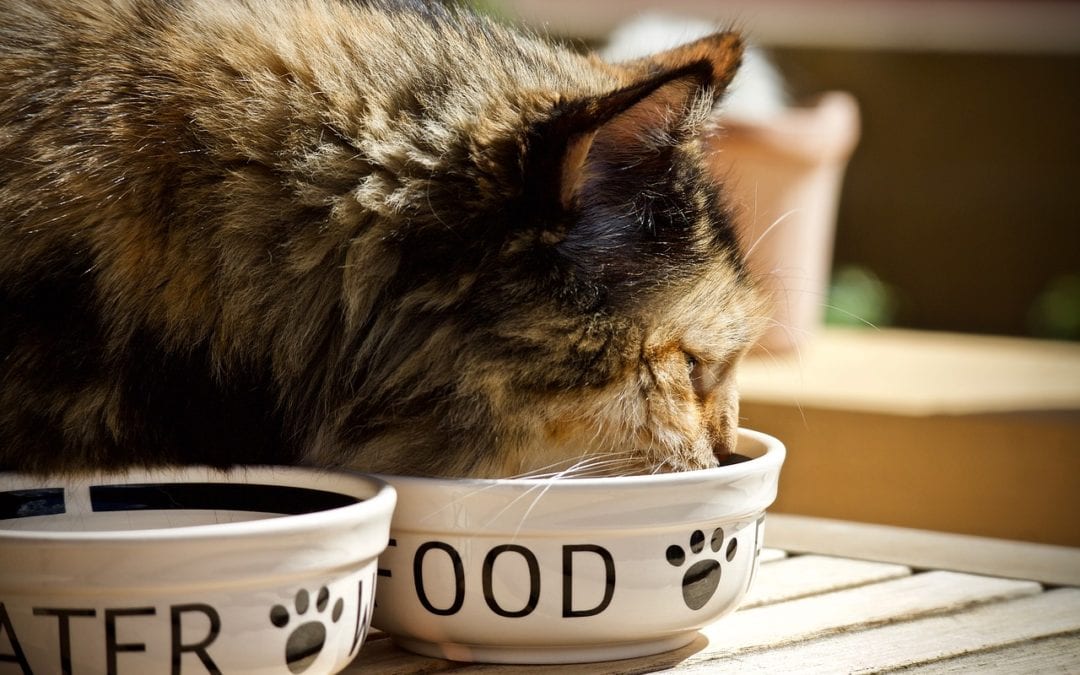1. You should always avoid canned cat food to promote your cat’s dental health.
Truth: Canned food alone will not cause dental issues, and there are actually several reasons why cats can benefit from consuming some canned food. Moist canned food helps to support kidney and urinary function. It’s also more filling, which can help cats to stay slender. Finally, every cat should be exposed to canned and dry food textures at a young age, so they learn to accept both. Later in life, many cats will need to assume a canned diet for medical reasons; familiarity will ease the transition.
The gold-standard for maintaining dental health is tooth-brushing. Ideally, you should brush your cat’s teeth daily, but if this is too demanding on your schedule, even intermittent tooth brushing can be beneficial for your cat’s oral health. In addition, it is recommended to provide daily small portions of dry food designed to remove tartar while the cat chews. Both Hill’s Science Diet and Royal Canin make feline diets with excellent tartar removal technology.
2. Cats need a variety of shapes, colors, and food brands to be happy, consistent eaters.
Truth: Many of the colorful, grocery-brand cat foods contain fillers and low-quality calories. These foods are commonly associated with urinary tract and digestive problems in cats. Dry, brown food is perfectly suitable; your cat will not get bored.
While it is a good idea to expose your cats to different textures and protein sources when they are young, it’s not advisable to switch labels every week. Pick one good brand, such as Hill’s Science Diet or Royal Canin, and serve a limited number of flavors, including canned and dry food.
3. Cat foods designed to promote urinary health will prevent urinary problems.
Truth: Most of the grocery store products labeled as “urinary health” foods are actually too aggressive in lowering the pH of your cat’s urine. Too much can lead to calcium oxalate bladder stones. If your cat has been diagnosed with urinary problems, only your veterinarian should tell you which diet elements will safely help to prevent further problems.
4. Cats should be fed low-fat food to control weight gain.
Truth: Cats are carnivores. Ironically, many diet brands labeled as “light” or “low-fat” are very high in carbohydrates; cats don’t need too many of those. Instead, cats require adequate protein, plus moderate fat for ideal body condition and maintenance of lean muscle.
Feeding a small portion of dry food (to exercise the teeth) and a moderate amount of canned food (for protein without the carbs) is a good strategy that will keep most cats lean. Every cat’s body composition is different, however, and ideal body weight for an adult cat can range dramatically. Ask your veterinarian to help you determine sensible portions for your cat.
5. Cats will automatically get fat after they are spayed or neutered.
Truth: Intact cats that roam free outside will definitely burn more calories than house cats. That’s because they’re so busy fighting for territory and running away from coyotes. Luckily, most cats are safely indoors all or most of the time. After being spayed or neutered, they aren’t susceptible to hormonal-driven fighting, and they probably cover less ground.
The confusion comes from pet food bags, which still base serving sizes on the needs of highly active, outdoor cats (and on selling more cat food). The trick is to feed your pet the amount of calories he actually needs for their lifestyle. For house cats, this is generally about half of the recommended serving listed on the bag. Your veterinarian can help you determine the ideal amount to feed your cat based on their lifestyle.

